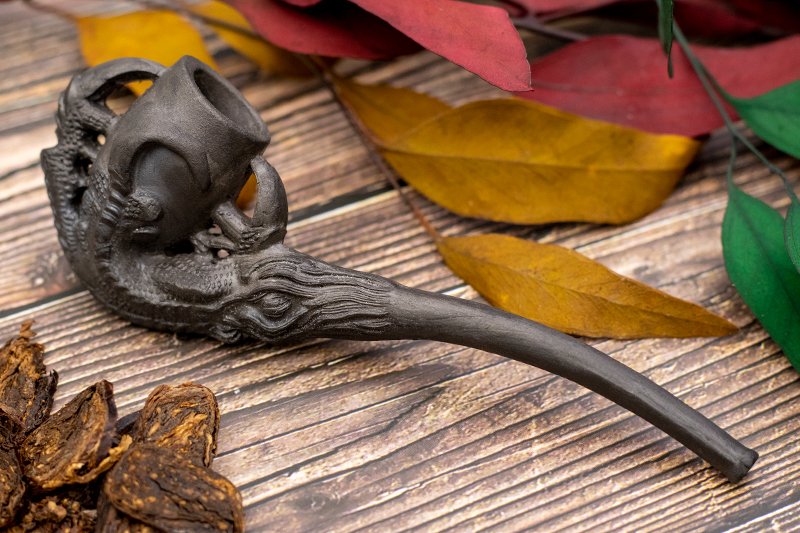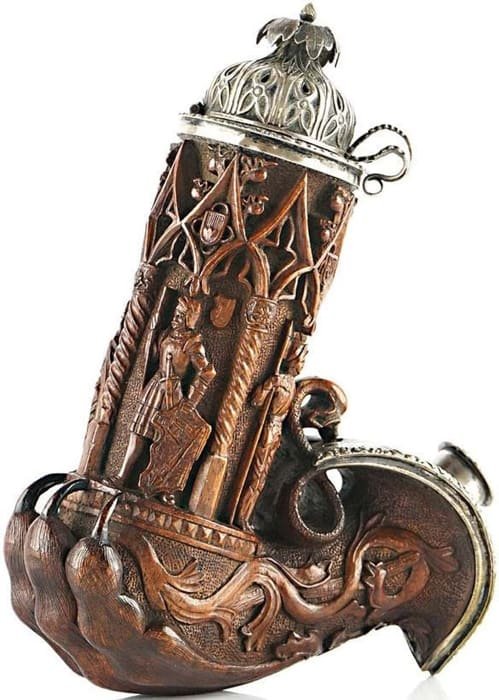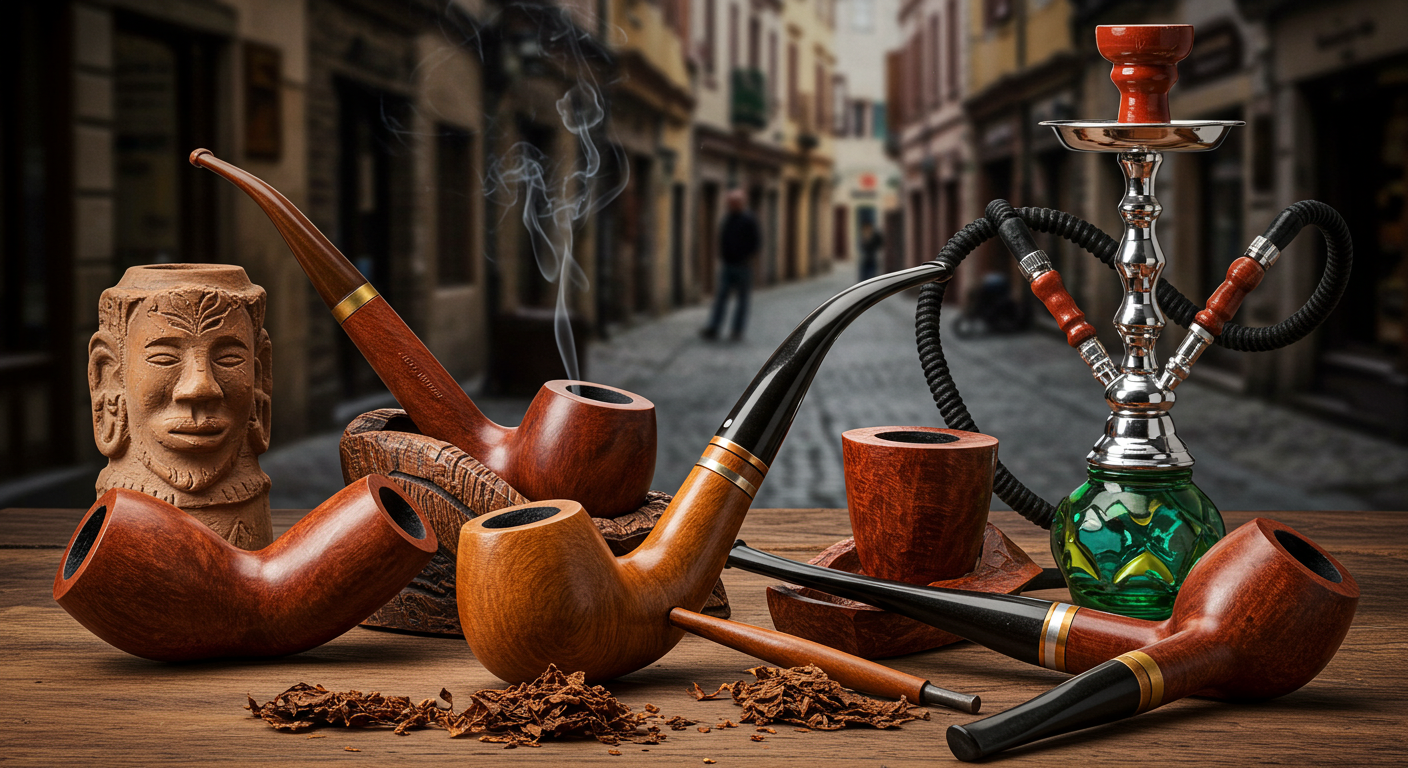Tobacco pipe usage dates back thousands of years, showcasing its rich history and cultural significance. This fascinating journey reveals how smoking pipes evolved over time. From ancient ceremonial uses to modern recreational enjoyment, pipes have played a vital role in various societies. The journey of tobacco pipes is not just about their use, but also about the stories they tell through time and culture.
The history of smoking pipes traces back to ancient civilizations, where they served both ceremonial and recreational purposes. Early examples of smoking pipes were crafted from clay, wood, and stone. These materials reflect the diverse cultures that embraced pipe smoking, particularly among indigenous peoples in the Americas. The history of tobacco is intricately connected to the use of smoking pipes, as tobacco has been one of the primary substances smoked in these devices throughout history. In particular, the introduction of tobacco in the 16th century led to a flourishing of styles and artistry in Europe. Collectible pipes emerged as a unique form of expression, showcasing the craftsmanship and cultural significance of smoking pipes. This evolution reflects the changing tastes and values of society as it embraced new forms of artistic expression.
In modern times, smoking pipes have evolved significantly in design and materials. Despite facing challenges from health awareness and anti-smoking campaigns, interest in pipe smoking has revived. Artisanal pipe tobacco has gained popularity, attracting enthusiasts who appreciate traditional craftsmanship. Online communities have emerged, fostering connections among pipe smokers. Moreover, the growing collectible market blends traditional artistry with contemporary innovations, ensuring the legacy of the tobacco pipe continues to thrive. Consequently, ongoing interest highlights the enduring appeal of smoking pipes across generations.
Discover the Fascinating Journey of the Tobacco Pipe Through Time and Cultures
The historical context of smoking pipes highlights their origins and importance in civilizations, especially regarding tobacco. These fascinating artifacts showcase the evolution of social practices surrounding smoking. They serve as a testament to the creativity and resourcefulness of the cultures that produced them.
The origins of smoking pipes can be traced back to ancient civilizations, where they served both ceremonial and recreational purposes. Early smoking pipes were crafted from clay, wood, and stone, showcasing the resources available to various cultures. The history of tobacco is closely linked to these devices, as tobacco was one of the primary substances smoked. In the Americas, indigenous peoples utilized pipes made from stone and wood, often adorned with intricate designs. These pipes played a significant role in rituals and social gatherings, emphasizing their cultural importance. Such practices highlight the deep connections between community and the act of smoking, which transcends mere enjoyment.
In contemporary society, the appreciation for smoking pipes continues to thrive. Enthusiasts seek artisanal pipe tobacco, valuing traditional craftsmanship and unique flavors. Online communities have emerged, connecting pipe smokers and fostering a sense of belonging. Consequently, the collectible market for pipes blends traditional artistry with modern innovations, ensuring that the legacy of the tobacco pipe remains vibrant. This transformation highlights the cultural significance and craftsmanship associated with smoking pipes.
The History Of Smoking Unveils the Art of Pipe Collecting
The evolution of smoking pipes illustrates their historical roots and cultural relevance across different civilizations. Consequently, transformation highlights the cultural significance and craftsmanship associated with smoking pipes. As tobacco gained popularity, various styles emerged, reflecting the tastes and preferences of European smokers. This period marked a significant shift in smoking culture, as pipes became more than just functional items.
The introduction of tobacco to Europe in the 16th century led to the development of various smoking pipe styles. Among these, the famous Meerschaum pipes became particularly popular among European smokers. Artisans crafted these pipes from a soft mineral, allowing for intricate designs and vibrant colors, which appealed to many enthusiasts.
During this period, the evolution of pipe tobacco blends also began. Different regions experimented with curing and flavoring techniques, creating unique blends that enhanced the smoking experience. This experimentation contributed to the rich tapestry of pipe tobacco history, as smokers sought diverse flavors and aromas.
In the 19th century, collectible pipes emerged as a popular hobby. Artisans began creating unique and artistic designs that appealed to collectors and enthusiasts alike. This creativity not only enhanced the aesthetic value of pipes but also solidified their status as collectible art pieces.
Today, the legacy of these historical developments continues to influence modern pipe smoking culture. Enthusiasts appreciate both the artistry and the history behind their smoking pipes. Therefore, the history of smoking pipes and cigars remains relevant, bridging past traditions with contemporary enjoyment.

Tobacco Pipe Reveals Secrets of Social Status and Community Bonds
In many cultures, smoking pipes serve as vital cultural symbols, representing social status, tradition, and community. Such artifacts often carry deep meanings, connecting individuals to their heritage and social practices. These connections are vital in understanding the role of smoking pipes in various cultural narratives. Across various societies, the significance of smoking pipes transcends mere functionality, embodying rich histories and communal bonds.
In numerous Native American cultures, the smoking pipe, or peace pipe, is a sacred object used in ceremonies to promote peace and unity. The history of hookah, or water pipes, has roots in Middle Eastern cultures, where they are used in social settings and are often associated with hospitality and relaxation.
Conversely, in Middle Eastern cultures, the hookah represents hospitality and social interaction. Friends and family gather around the hookah, sharing stories and laughter. This communal experience emphasizes the role of smoking pipes in creating connections among people, reinforcing cultural values of togetherness and enjoyment. These gatherings often serve as a backdrop for storytelling and the sharing of traditions, further enriching the cultural fabric.
Currently, the legacy of smoking pipes continues to thrive. Collectors seek unique designs that reflect their cultural significance and artistry. The evolution of smoking pipes illustrates their historical roots and cultural relevance across different civilizations. Consequently, smoking pipes remain relevant, bridging the past and present in meaningful ways.
How Cigar History Unveils the Secrets of Pipe Smokers
The history of smoking pipes reveals a rich cultural evolution, highlighting the transition to cigars in the 19th century and the niche market for collectible pipes. This evolution showcases how smoking practices have changed over time, reflecting societal values and preferences. Notably, the rise of cigar lounges and clubs illustrates the growing popularity of cigars as an alternative to traditional pipe smoking. This shift reflects broader changes in social habits and preferences regarding smoking culture.
Cigar history intersects with the history of smoking pipes, particularly in the 19th century. During this time, cigars gained immense popularity, leading to the establishment of dedicated cigar lounges and clubs. These venues provided a social space for enthusiasts to enjoy cigars, often in a luxurious setting. Therefore, the culture surrounding smoking expanded, offering diverse experiences for aficionados.
Collectible pipes have emerged as a niche market, attracting enthusiasts who seek rare and vintage pieces. These collectors appreciate the craftsmanship and history behind each pipe, often valuing unique designs and materials. This appreciation fosters a deeper understanding of the artistry involved in pipe making and its historical context. Moreover, the niche market for collectible pipes continues to thrive, attracting enthusiasts who appreciate their craftsmanship. This trend highlights how smoking pipes have transcended their functional use, becoming cherished artifacts.
Currently, the legacy of smoking pipes and cigars continues to thrive. Enthusiasts actively seek out artisanal pipe tobacco and unique cigar blends, valuing traditional craftsmanship. Online communities foster connections among collectors and smokers, creating a vibrant culture around these practices. Therefore, the history of smoking pipes and cigars remains relevant, bridging past traditions with contemporary enjoyment.

Explore How Tobacco Pipe Designs Evolve Amidst Health Awareness and Artisan Revival
The evolution of smoking pipes reflects a blend of modern design innovations and a shifting cultural landscape influenced by health awareness and a renewed interest in artisanal tobacco. Recent trends show that smoking pipe enthusiasts are increasingly drawn to unique designs and high-quality materials. Innovations such as acrylic stems and premium briar wood have transformed traditional smoking pipes into modern collectibles. These advancements not only enhance the functionality of pipes but also cater to the evolving tastes of modern smokers.
The modern era has seen significant changes in the design and materials used in smoking pipes. Artisans now utilize acrylic stems, which offer durability and vibrant colors, enhancing the aesthetic appeal of pipes. Likewise, high-quality briar wood has become a preferred choice for crafting smoking pipes, known for its heat resistance and rich grain patterns. These advancements reflect a commitment to both functionality and artistry in pipe making.
Health awareness and anti-smoking campaigns have notably impacted the popularity of smoking pipes. Many traditional tobacco users have shifted away from pipe smoking due to these societal pressures. However, this decline has sparked a resurgence of interest in pipe tobacco and artisanal blends, attracting a new generation of smokers eager to explore this hobby. This revitalization highlights the adaptability of smoking culture in response to changing societal norms. Such adaptability is crucial for the survival of traditional practices in a rapidly changing world.
Therefore, the smoking pipe community has flourished, with enthusiasts seeking unique and handcrafted pieces. Collectible pipes have gained popularity, showcasing the artistry and craftsmanship involved in their creation. Online platforms have emerged, connecting collectors and fostering a vibrant community centered around the appreciation of smoking pipes. This trend emphasizes the enduring appeal of tobacco pipes, bridging traditional practices with contemporary interests.
Ultimately, the history of smoking pipes illustrates a dynamic interplay between tradition and modernity. The evolution of smoking pipes continues to reflect cultural shifts and innovations in design. As the community grows, the legacy of smoking pipes remains vibrant, ensuring their relevance in today’s society.
Unlock the Secrets of Collectible Pipes and Their Value
The world of pipe collecting has evolved into a vibrant community where enthusiasts share their passion and knowledge through online platforms, while the market for unique and historical pipes continues to grow.
Online forums and social media have transformed how pipe enthusiasts connect. These platforms allow collectors to showcase their unique pieces and share personal experiences. This sharing fosters a sense of camaraderie among enthusiasts, enriching the community experience. Additionally, they provide a space for discussions about the rich history of smoking pipes. Enthusiasts can exchange tips on maintenance and restoration, fostering a sense of community. This interaction enhances the appreciation for the artistry involved in pipe making.
The collectible pipes market has seen significant growth in recent years. Auctions and specialty shops now cater specifically to collectors seeking unique and historical pieces. This expansion reflects a broader interest in the history of tobacco and smoking pipes. Collectors often seek rare items that tell a story, adding depth to their collections. This narrative aspect enhances the emotional connection collectors have with their pipes, making each piece more than just an object. As a result, the market continues to thrive, attracting both seasoned collectors and newcomers alike.
Looking ahead, the future of smoking pipes appears promising. New generations are discovering the rich history of smoking and the artistry of pipe making. This interest may lead to a blend of traditional practices with modern innovations. For example, artisans are experimenting with new materials and designs, appealing to contemporary tastes. Such developments ensure that the legacy of tobacco pipes remains vibrant and relevant in today’s society.
In summary, the evolution of pipe collecting highlights a dynamic community. Enthusiasts actively engage in sharing knowledge and experiences. The growing market for collectible pipes reflects a deep appreciation for their history and craftsmanship. Ultimately, the future of smoking pipes looks bright.

The Enduring Legacy of Tobacco Pipe as We Reflect on Its Cultural Impact
The resurgence of interest in tobacco pipes reveals a fascinating blend of history and modern culture. This revival highlights the enduring appeal of smoking pipes across generations. As we explore this topic, we uncover the intricate connections between tradition and contemporary practices. These connections reveal the ongoing relevance of tobacco pipes in modern society, despite changing attitudes towards smoking.
The evolution of smoking pipes illustrates their historical roots and cultural relevance across different civilizations. Interestingly, the introduction of tobacco in the 16th century transformed smoking practices in Europe. This period marked the beginning of a rich tradition that evolved into the collectible artisan designs of the 19th century.
Smoking pipes have served as important cultural symbols, representing social status and community. They reflect the transition to cigars in the 19th century. Moreover, the niche market for collectible pipes continues to thrive, attracting enthusiasts who appreciate their craftsmanship.
The evolution of smoking pipes also mirrors modern design innovations and a shifting cultural landscape. Health awareness has influenced smoking habits, yet interest in artisanal tobacco remains strong. The vibrant community of pipe collectors shares their passion through online platforms, fostering a deeper appreciation for unique and historical pipes.
Ultimately, the history of smoking pipes reveals a complex narrative that intertwines tradition, culture, and modernity. In numerous Native American cultures, the smoking pipe, or peace pipe, is a sacred object used in ceremonies to promote peace and unity. The enduring fascination with tobacco pipes highlights their significance in social contexts. This significance is rooted in the shared experiences and memories that smoking pipes evoke among individuals and communities. As we look to the future, the appreciation for these artifacts will likely continue to grow.
Listen to an AI-Generated Podcast of this Blog
Unearthing the Rich Tapestry of Smoking Pipe History
Here’s a fascinating random fact about the history of smoking pipes. The history of smoking pipes spans thousands of years, showcasing their cultural significance. Without doubt, early smoking pipes were crafted from materials like clay, wood, and stone. In this situation, indigenous peoples in the Americas played a crucial role in pipe smoking traditions. On the positive side, the introduction of tobacco in the 16th century transformed smoking practices in Europe. By the same token, this period marked the rise of collectible pipes, reflecting artistry and craftsmanship. Also, the history of hookah reveals its importance in Middle Eastern cultures, emphasizing social bonds. All things considered, smoking pipes have evolved significantly, bridging past traditions with contemporary enjoyment. Summing up, the legacy of smoking pipes continues to thrive today, attracting enthusiasts worldwide.
FAQs
What is the history of smoking pipes and their significance?
Smoking pipes have a rich history, serving ceremonial and recreational purposes across various cultures, especially with tobacco.
How did the introduction of tobacco influence smoking pipes?
The introduction of tobacco in the 16th century led to diverse styles and artistry in smoking pipes across Europe.
Can you tell me about the materials used in early smoking pipes?
Early smoking pipes were crafted from clay, wood, and stone, reflecting the resources available to different cultures.
What role do smoking pipes play in Native American cultures?
In Native American cultures, smoking pipes, or peace pipes, symbolize unity and are used in important ceremonies.
How has the design of smoking pipes evolved over time?
Modern smoking pipes now feature innovations like acrylic stems and high-quality briar wood, enhancing both aesthetics and functionality.
What is the current trend in pipe tobacco?
Enthusiasts increasingly seek artisanal pipe tobacco, valuing traditional craftsmanship and unique flavors in their smoking experience.
How do online communities impact pipe smoking culture?
Online communities connect pipe smokers, fostering a sense of belonging and sharing knowledge about collectible pipes and tobacco.
What is the significance of collectible pipes in today’s market?
Collectible pipes have become a niche market, attracting enthusiasts who appreciate their craftsmanship and historical value.
How does cigar history relate to smoking pipes?
Cigar history intersects with smoking pipes, especially in the 19th century when cigars gained popularity and dedicated lounges emerged.
What does the future hold for the tobacco pipe community?
The future looks promising as new generations discover the history of smoking and the artistry of pipe making.
Come Visit Us
We have three fantastic locations we’d love to invite you to! If you’re in the Chicagoland area, you can come chill with us at either our Grayslake or Schaumburg locations. Alternatively, if you’re in Wisconsin, stop by and visit us at our Kenosha lounge. Please note that you must be 21+ to enter with a valid ID. We hope to see you soon!


